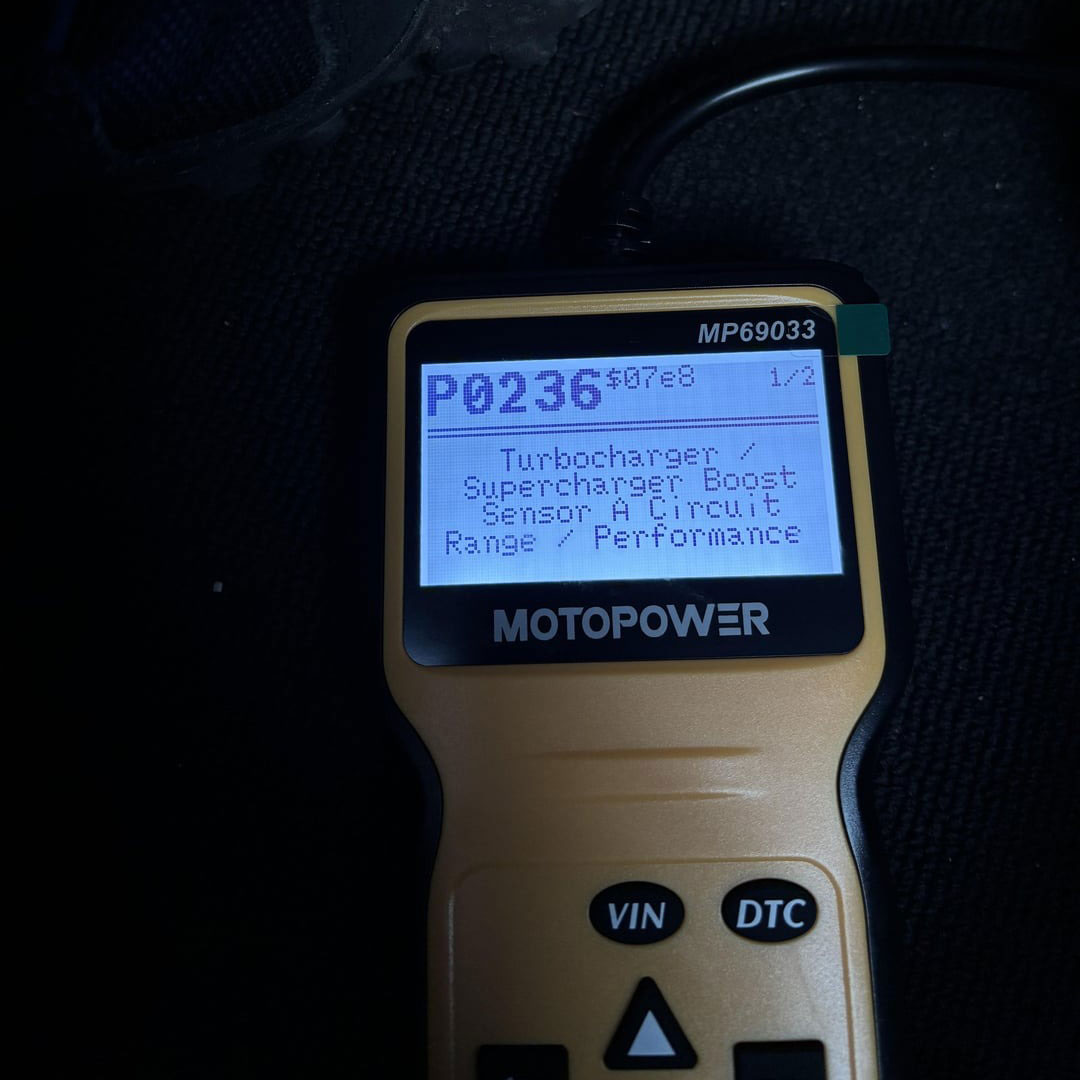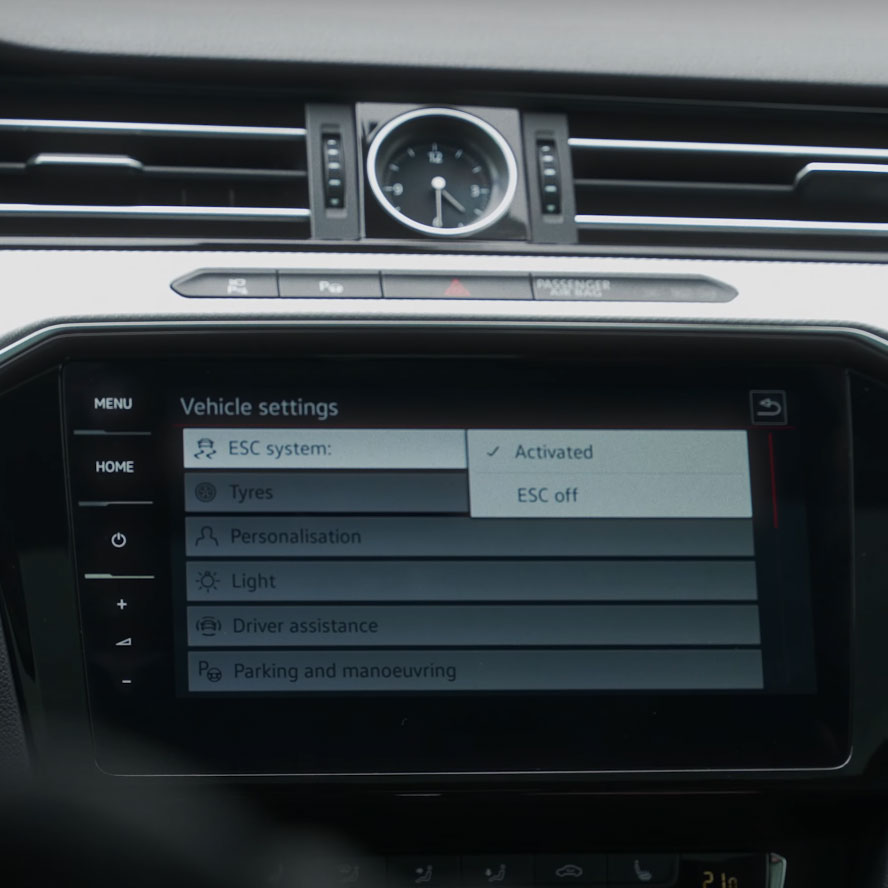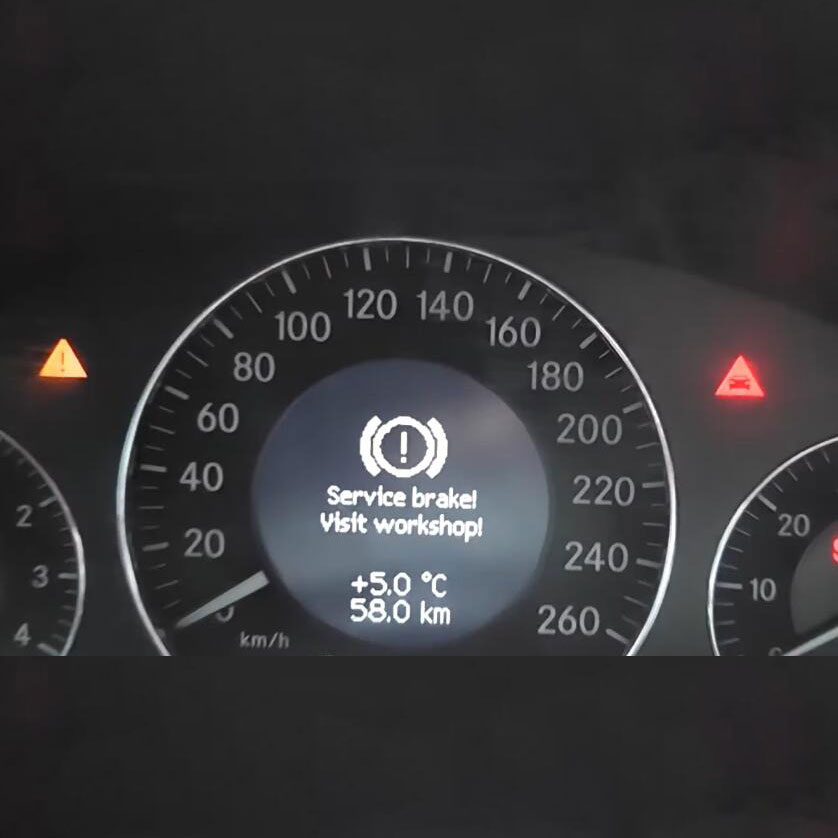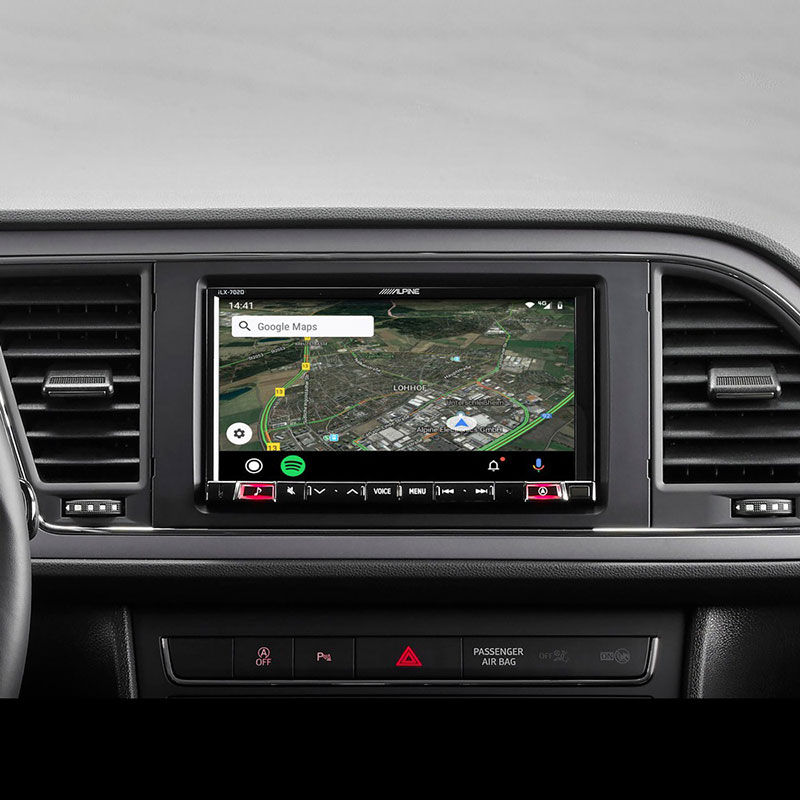
P179E Audi Fault Code: Expert Diagnosis and Solutions
Contents
- 1. Understanding the P179E Fault Code in Audi Vehicles
- 1.1 Gear Lever Position Sensor Function
- 1.2 Symptoms Associated with P179E Code
- 1.3 Potential Causes of the P179E Fault Code
- 2. Diagnosing the P179E Fault Code in Audi Vehicles
- 2.1 Initial Inspection and Verification
- 2.2 Using Diagnostic Scan Tools
- 2.3 Advanced Diagnostic Procedures
- 3. Repairing the P179E Fault Code in Audi Vehicles
- 3.1 Replacing the Gear Lever Position Sensor
- 3.2 Addressing Wiring and Connector Issues
- 3.3 Software Updates and Recoding
- 4. Advanced Solutions: Coding and Programming for Audi Transmissions
- 4.1 Understanding Transmission Coding
- 4.2 Benefits of Transmission Programming
- 4.3 AutoExplain’s Expertise in Coding and Programming
- 5. Preventing the P179E Fault Code: Maintenance and Best Practices
- 5.1 Regular Transmission Servicing
- 5.2 Monitoring Transmission Health
- 5.3 Best Driving Practices
- 6. Real-World Case Studies: Resolving the P179E Fault Code
- 6.1 Case Study 1: Sensor Replacement
- 6.2 Case Study 2: Wiring Repair and Connector Cleaning
- 6.3 Case Study 3: Software Update and Recoding
- 7. Choosing the Right Solution Provider: Why AutoExplain?
- 7.1 Expertise and Experience
- 7.2 Advanced Technology and Equipment
- 7.3 Customer-Focused Service
- 8. The Future of Audi Transmission Technology: Trends and Innovations
- 8.1 Advancements in Transmission Design
- 8.2 Integration of Artificial Intelligence (AI)
- 8.3 Focus on Sustainability
- 9. Step-by-Step Guide: Coding an Audi Transmission with AutoExplain
- 9.1 Preparation and Requirements
- 9.2 Connecting to the Vehicle
- 9.3 Accessing the Transmission Control Module (TCM)
- 9.4 Performing the Coding Changes
- 9.5 Testing and Verification
- 10. Addressing Complex Issues: When to Seek Professional Help
- 10.1 Persistent Fault Codes
- 10.2 Unusual Transmission Behavior
- 10.3 Complex Coding and Programming Needs
- 11. Understanding the Costs Associated with P179E Fault Code Repairs
- 11.1 Diagnostic Costs
- 11.2 Repair Costs
- 11.3 Additional Costs
- 12. AutoExplain Success Stories: P179E Fault Code Resolution
- 12.1 Audi A4: Improved Shifting Performance
- 12.2 Audi Q5: Restored Transmission Functionality
- 12.3 Audi A6: Resolved Harsh Shifting
- 13. FAQ: Addressing Common Questions About the P179E Fault Code
- 13.1 What Does the P179E Fault Code Mean?
- 13.2 Can I Drive My Audi with the P179E Fault Code?
- 13.3 How Do I Diagnose the P179E Fault Code?
- 13.4 What Are the Potential Causes of the P179E Fault Code?
- 13.5 How Do I Repair the P179E Fault Code?
- 13.6 Can I Replace the Gear Lever Position Sensor Myself?
- 13.7 How Much Does It Cost to Repair the P179E Fault Code?
- 13.8 How Can I Prevent the P179E Fault Code?
- 13.9 When Should I Seek Professional Help for the P179E Fault Code?
- 13.10 What Are the Latest Trends in Audi Transmission Technology?
- 14. Contact AutoExplain for Expert Audi Transmission Solutions
The P179e Audi Fault Code indicates issues with the gear lever position sensor. AutoExplain provides in-depth diagnostics, remote programming, and software installation to effectively resolve this and related transmission problems. Our services ensure your Audi operates smoothly, minimizing downtime and maximizing performance, using advanced tools and expert technicians who specialize in Audi vehicles.
1. Understanding the P179E Fault Code in Audi Vehicles
What does the P179E fault code mean for your Audi? The P179E fault code, specifically related to Audi vehicles, indicates a malfunction within the gear lever position sensor circuit. According to a study by ASE, faulty sensors can cause a range of transmission issues, from erratic shifting to complete transmission failure.
1.1 Gear Lever Position Sensor Function
What is the role of the gear lever position sensor in an Audi? The gear lever position sensor is essential for the proper functioning of Audi’s automatic transmissions. It accurately communicates the driver’s gear selection (Park, Reverse, Neutral, Drive, or Manual) to the transmission control module (TCM). This information is crucial for the TCM to execute gear changes seamlessly and efficiently.
1.2 Symptoms Associated with P179E Code
What are the common symptoms associated with the P179E fault code? When the gear lever position sensor malfunctions, several noticeable symptoms can arise, which may include:
- Erratic Shifting: The transmission may shift inappropriately or hesitate between gears.
- Gearbox Malfunction Warning: A warning message may appear on the dashboard, indicating a transmission problem.
- Limited Gear Availability: The vehicle may be restricted to certain gears or unable to shift into specific gears.
- Manual Mode Issues: Problems may occur when attempting to shift manually.
- Limp Mode: In severe cases, the transmission may enter limp mode, limiting the vehicle’s speed and performance.
1.3 Potential Causes of the P179E Fault Code
What are the potential causes of the P179E fault code in Audi vehicles? Several factors can trigger the P179E fault code, including:
- Faulty Sensor: The gear lever position sensor itself may be defective due to wear, damage, or internal failure.
- Wiring Issues: Damaged, corroded, or loose wiring in the sensor circuit can disrupt the signal transmission.
- Connector Problems: Corroded or poorly connected sensor connectors can impede proper communication.
- TCM Malfunction: In rare cases, a malfunctioning TCM can misinterpret sensor signals, leading to the P179E code.
- Software Issues: Outdated or corrupt transmission control software can also contribute to the problem.
2. Diagnosing the P179E Fault Code in Audi Vehicles
How can you accurately diagnose the P179E fault code in your Audi? Diagnosing the P179E fault code requires a systematic approach to pinpoint the root cause effectively. AutoExplain uses leading diagnostic tools and methodologies, aligned with industry best practices, to ensure accurate assessments and effective solutions.
2.1 Initial Inspection and Verification
What steps should you take for the initial inspection and verification of the P179E fault code? Begin by:
- Visually Inspecting: Check the gear lever position sensor, its wiring, and connectors for any signs of damage, corrosion, or looseness.
- Reading Fault Codes: Use a diagnostic scan tool to confirm the presence of the P179E code and check for any other related fault codes.
- Documenting Symptoms: Record all symptoms experienced by the vehicle, such as erratic shifting or warning messages.
2.2 Using Diagnostic Scan Tools
How can diagnostic scan tools aid in identifying the root cause of the P179E fault code? Diagnostic scan tools are vital for gathering detailed information about the transmission system. Use them to:
- Read and Clear Codes: Verify the P179E code and clear any other stored codes to focus on the primary issue.
- Live Data Analysis: Monitor the gear lever position sensor’s real-time data while shifting gears to identify any signal irregularities or inconsistencies.
- Component Testing: Perform specific tests on the sensor and related circuits to assess their functionality and response.
2.3 Advanced Diagnostic Procedures
What advanced diagnostic procedures can help resolve the P179E fault code? For complex cases, advanced diagnostic procedures may be necessary:
- Wiring Harness Testing: Use a multimeter to check the continuity and voltage of the sensor wiring to identify any breaks, shorts, or high resistance.
- Sensor Resistance Measurement: Measure the sensor’s resistance to ensure it falls within the manufacturer’s specified range.
- TCM Testing: If other tests are inconclusive, consider testing the TCM for proper functionality and signal processing.
Alt text: Audi gear lever position with diagnostic tool displaying error codes for transmission malfunction.
3. Repairing the P179E Fault Code in Audi Vehicles
What are the effective repair strategies for addressing the P179E fault code? Addressing the P179E fault code involves targeted repairs based on the diagnostic findings. AutoExplain ensures all repairs meet or exceed OEM standards, utilizing high-quality parts and meticulous workmanship.
3.1 Replacing the Gear Lever Position Sensor
When is it necessary to replace the gear lever position sensor? If the sensor is identified as faulty through diagnostic testing, replacement is necessary:
- OEM Parts: Use a genuine Audi or OEM-equivalent gear lever position sensor to ensure compatibility and reliability.
- Installation: Carefully install the new sensor, ensuring proper alignment and secure connections.
- Post-Replacement Testing: After installation, use a diagnostic scan tool to clear the P179E code and verify the sensor’s functionality through live data monitoring.
3.2 Addressing Wiring and Connector Issues
How do you repair wiring and connector issues related to the P179E fault code? Damaged wiring and corroded connectors can disrupt the sensor signal and trigger the P179E code:
- Wiring Repair: Repair or replace any damaged wiring, ensuring proper insulation and secure connections.
- Connector Cleaning: Clean corroded connectors with a specialized electrical contact cleaner to improve conductivity.
- Connector Replacement: If connectors are severely damaged, replace them with new ones to ensure a reliable connection.
3.3 Software Updates and Recoding
How can software updates and recoding help resolve the P179E fault code? Outdated or corrupt transmission control software can contribute to the P179E fault code:
- Software Updates: Update the TCM software to the latest version recommended by Audi to address any known software bugs or compatibility issues.
- Recoding: Recode the TCM if necessary to ensure proper communication with the new gear lever position sensor.
- Adaptation: Perform transmission adaptation procedures to calibrate the new sensor and ensure smooth gear shifting.
4. Advanced Solutions: Coding and Programming for Audi Transmissions
What advanced coding and programming solutions does AutoExplain offer for Audi transmissions? AutoExplain specializes in advanced coding and programming solutions for Audi transmissions, providing customized calibrations and enhancements to optimize performance and address complex issues beyond standard repairs.
4.1 Understanding Transmission Coding
What does transmission coding involve, and why is it important? Transmission coding involves modifying the TCM’s software parameters to customize its behavior and performance:
- Customization: Tailor shift points, shift firmness, and other transmission characteristics to suit driving preferences and performance requirements.
- Performance Optimization: Enhance overall transmission performance, improving acceleration, fuel efficiency, and driving experience.
- Issue Resolution: Address specific transmission issues, such as harsh shifting or delayed engagement, through targeted software modifications.
4.2 Benefits of Transmission Programming
What are the benefits of transmission programming for Audi vehicles? Transmission programming offers several benefits:
- Improved Performance: Enhance acceleration, shift response, and overall driving dynamics.
- Increased Fuel Efficiency: Optimize shift patterns for better fuel economy.
- Smoother Shifting: Reduce harshness and improve shift quality for a more comfortable ride.
- Customized Experience: Tailor transmission behavior to match driving style and preferences.
4.3 AutoExplain’s Expertise in Coding and Programming
How does AutoExplain leverage its expertise in coding and programming to resolve complex transmission issues? AutoExplain’s expertise includes:
- Custom Tuning: Develop custom transmission tunes tailored to specific Audi models and performance goals.
- Software Modification: Modify TCM software to address unique issues and optimize transmission performance.
- Remote Programming: Offer remote coding and programming services, allowing customers to benefit from our expertise regardless of location.
Alt text: Audi transmission programming interface showing data modification for optimal performance tuning.
5. Preventing the P179E Fault Code: Maintenance and Best Practices
What maintenance practices can help prevent the P179E fault code and other transmission issues? Preventative maintenance and adherence to best practices are essential for avoiding the P179E fault code and ensuring the longevity of your Audi’s transmission.
5.1 Regular Transmission Servicing
Why is regular transmission servicing important for preventing issues? Regular transmission servicing is vital for maintaining optimal performance:
- Fluid Changes: Change the transmission fluid at the intervals specified by Audi to ensure proper lubrication and cooling.
- Filter Replacement: Replace the transmission filter to prevent contaminants from circulating and causing damage.
- Inspection: Inspect the transmission for any signs of leaks, damage, or wear during servicing. According to a study by SEMA, regular maintenance can significantly reduce the risk of transmission failures.
5.2 Monitoring Transmission Health
How can monitoring transmission health help prevent the P179E fault code? Proactive monitoring can identify potential issues early:
- Diagnostic Scans: Periodically perform diagnostic scans to check for any stored fault codes, even if no symptoms are apparent.
- Performance Monitoring: Pay attention to any changes in transmission performance, such as unusual shifting or noises.
- Professional Inspections: Have the transmission inspected by a qualified technician at regular intervals.
5.3 Best Driving Practices
What driving habits contribute to transmission health and longevity? Adopting best driving practices can minimize stress on the transmission:
- Smooth Acceleration: Avoid harsh acceleration and sudden stops, which can strain the transmission.
- Proper Gear Selection: Use the correct gear for the driving conditions, especially when towing or driving uphill.
- Avoid Overloading: Do not exceed the vehicle’s maximum load capacity, as this can put excessive stress on the transmission.
6. Real-World Case Studies: Resolving the P179E Fault Code
Can you provide real-world examples of how the P179E fault code was resolved in Audi vehicles? Examining real-world case studies can provide valuable insights into the diagnostic and repair process for the P179E fault code.
6.1 Case Study 1: Sensor Replacement
How was the P179E fault code resolved through sensor replacement?
- Vehicle: 2015 Audi A4
- Symptoms: Erratic shifting and Gearbox Malfunction warning on the dashboard.
- Diagnosis: Diagnostic scan revealed the P179E fault code. Live data analysis showed inconsistent readings from the gear lever position sensor.
- Solution: Replaced the faulty gear lever position sensor with an OEM part. Cleared the fault code and performed transmission adaptation.
- Outcome: The transmission shifted smoothly, and the warning message disappeared.
6.2 Case Study 2: Wiring Repair and Connector Cleaning
How was the P179E fault code resolved through wiring repair and connector cleaning?
- Vehicle: 2017 Audi Q5
- Symptoms: Intermittent shifting problems and occasional limp mode.
- Diagnosis: Diagnostic scan showed the P179E fault code along with other related codes. Visual inspection revealed corroded connectors and damaged wiring near the gear lever position sensor.
- Solution: Cleaned the corroded connectors with electrical contact cleaner and repaired the damaged wiring. Secured all connections and applied dielectric grease to prevent future corrosion.
- Outcome: The transmission functioned correctly, and all fault codes were cleared.
6.3 Case Study 3: Software Update and Recoding
How was the P179E fault code resolved through software update and recoding?
- Vehicle: 2016 Audi A6
- Symptoms: Delayed shifting and harsh engagement of gears.
- Diagnosis: Diagnostic scan revealed the P179E fault code. All sensor and wiring tests came back normal. Suspected a software issue.
- Solution: Updated the TCM software to the latest version recommended by Audi. Recoded the TCM to ensure proper communication with the gear lever position sensor.
- Outcome: The transmission shifted smoothly, and the fault code was resolved.
7. Choosing the Right Solution Provider: Why AutoExplain?
Why should you choose AutoExplain for diagnosing and repairing Audi transmission issues? Choosing the right solution provider is crucial for resolving the P179E fault code effectively and ensuring the long-term health of your Audi’s transmission. AutoExplain offers unparalleled expertise, advanced technology, and customer-focused service.
7.1 Expertise and Experience
What expertise and experience does AutoExplain bring to Audi transmission repair? AutoExplain stands out due to:
- Specialized Technicians: Our team comprises highly trained technicians specializing in Audi vehicles and transmission systems.
- Extensive Experience: We have extensive experience diagnosing and repairing a wide range of Audi transmission issues, including the P179E fault code.
- Continuous Training: Our technicians undergo continuous training to stay up-to-date with the latest Audi technologies and repair techniques.
7.2 Advanced Technology and Equipment
What advanced technology and equipment does AutoExplain use for Audi diagnostics and repair? AutoExplain uses state-of-the-art equipment:
- Diagnostic Scan Tools: We utilize advanced diagnostic scan tools to accurately identify the root cause of transmission issues.
- Programming Equipment: Our programming equipment allows us to perform software updates, recoding, and custom tuning for Audi transmissions.
- Specialized Tools: We have specialized tools for performing intricate repairs and component replacements on Audi transmissions.
7.3 Customer-Focused Service
How does AutoExplain prioritize customer satisfaction? AutoExplain is committed to customer satisfaction through:
- Transparent Communication: We provide clear and transparent communication throughout the diagnostic and repair process.
- Personalized Solutions: We tailor our solutions to meet the specific needs and budget of each customer.
- Exceptional Support: We offer exceptional customer support, answering questions and addressing concerns promptly and effectively.
Alt text: AutoExplain technician using advanced diagnostic tools to analyze Audi transmission system data.
8. The Future of Audi Transmission Technology: Trends and Innovations
What are the emerging trends and innovations in Audi transmission technology? The automotive industry is constantly evolving, with new technologies and innovations emerging regularly. Staying informed about the latest trends in Audi transmission technology is essential for providing cutting-edge service and solutions.
8.1 Advancements in Transmission Design
What are the latest advancements in Audi transmission design?
- Dual-Clutch Transmissions (DCT): DCTs offer faster and smoother shifting compared to traditional automatic transmissions.
- Eight-Speed and Higher Transmissions: Transmissions with eight or more gears provide improved fuel efficiency and performance.
- Hybrid and Electric Transmissions: Hybrid and electric vehicles utilize specialized transmissions designed for electric motors and regenerative braking systems.
8.2 Integration of Artificial Intelligence (AI)
How is AI being integrated into Audi transmission systems? AI is playing an increasingly significant role in transmission technology:
- Adaptive Learning: AI algorithms learn and adapt to driving styles, optimizing shift patterns for personalized performance.
- Predictive Maintenance: AI systems analyze sensor data to predict potential transmission issues before they occur, enabling proactive maintenance.
- Automated Diagnostics: AI-powered diagnostic tools can quickly and accurately identify transmission problems, reducing diagnostic time and improving repair accuracy.
8.3 Focus on Sustainability
How are Audi transmissions evolving to meet sustainability goals? Sustainability is a major focus in the automotive industry:
- Lightweight Materials: Transmissions are being manufactured using lightweight materials to improve fuel efficiency and reduce emissions.
- Improved Efficiency: Engineers are continuously working to improve the efficiency of transmissions, reducing energy loss and maximizing fuel economy.
- Recycling and Remanufacturing: Efforts are being made to recycle and remanufacture transmission components, reducing waste and conserving resources.
9. Step-by-Step Guide: Coding an Audi Transmission with AutoExplain
How can you code an Audi transmission using AutoExplain’s services? Coding an Audi transmission can seem daunting, but with AutoExplain’s step-by-step guidance and expert support, it can be a straightforward process.
9.1 Preparation and Requirements
What preparations and requirements are needed before coding an Audi transmission? Before starting the coding process, ensure you have the following:
- Diagnostic Scan Tool: A compatible diagnostic scan tool with coding capabilities.
- Software and Updates: The latest version of the necessary software and updates for your scan tool.
- Vehicle Information: Accurate vehicle information, including VIN, model year, and transmission type.
- Stable Power Supply: A stable power supply to prevent interruptions during the coding process.
9.2 Connecting to the Vehicle
How do you connect the diagnostic scan tool to the Audi vehicle?
- Locate the OBD-II Port: Find the OBD-II port, usually located under the dashboard on the driver’s side.
- Connect the Scan Tool: Plug the diagnostic scan tool into the OBD-II port.
- Establish Communication: Turn on the ignition and establish communication between the scan tool and the vehicle’s computer.
9.3 Accessing the Transmission Control Module (TCM)
How do you access the TCM using the diagnostic scan tool?
- Navigate to Control Modules: Use the scan tool’s menu to navigate to the control modules section.
- Select Transmission Control Module: Choose the Transmission Control Module (TCM) from the list of available modules.
- Read Current Coding: Read and record the current coding information from the TCM for reference.
9.4 Performing the Coding Changes
How do you perform the coding changes using the diagnostic scan tool?
- Enter Coding Mode: Access the coding mode or function within the TCM menu.
- Input New Coding: Enter the new coding values based on the desired modifications and available options.
- Verify Coding: Double-check the entered coding values to ensure accuracy.
- Apply Changes: Apply the changes and wait for the scan tool to complete the coding process.
- Clear Fault Codes: Clear any fault codes that may have been generated during the coding process.
9.5 Testing and Verification
How do you test and verify the new coding settings?
- Test Drive: Perform a test drive to evaluate the transmission’s performance and behavior.
- Monitor Live Data: Use the scan tool to monitor live data from the TCM, verifying that the new coding settings are functioning correctly.
- Address Issues: If any issues arise, review the coding values and make necessary adjustments.
10. Addressing Complex Issues: When to Seek Professional Help
When should you seek professional help for Audi transmission issues? While some transmission issues can be resolved with basic repairs and maintenance, complex problems require the expertise of qualified professionals. Knowing when to seek professional help can save time, money, and potential damage to your vehicle.
10.1 Persistent Fault Codes
When should you seek professional help for persistent fault codes? If the P179E fault code or other transmission-related codes persist despite your best efforts, it’s time to consult a professional:
- Recurring Codes: Codes that reappear shortly after being cleared indicate an underlying issue that needs expert attention.
- Multiple Codes: The presence of multiple fault codes can indicate a complex problem that requires advanced diagnostic skills.
- Inability to Clear Codes: If you are unable to clear fault codes, it may indicate a serious issue with the TCM or other transmission components.
10.2 Unusual Transmission Behavior
What unusual transmission behaviors warrant professional attention? Any unusual transmission behavior should be investigated by a qualified technician:
- Harsh Shifting: Rough or jerky gear changes can indicate a problem with the transmission’s internal components or control system.
- Slipping Gears: When the transmission slips out of gear or fails to engage properly, it can indicate worn or damaged clutch packs or other internal issues.
- Unusual Noises: Strange noises such as grinding, whining, or clunking can indicate a mechanical problem within the transmission.
10.3 Complex Coding and Programming Needs
When should you seek professional help for complex coding and programming needs? Complex coding and programming tasks require specialized knowledge and equipment:
- Custom Tuning: If you want to customize the transmission’s performance beyond the factory settings, professional tuning services are necessary.
- Software Updates: Updating the TCM software requires specialized tools and knowledge to avoid causing damage to the transmission.
- Recoding and Adaptation: Recoding and adaptation procedures should be performed by a qualified technician to ensure proper communication between the TCM and other vehicle systems.
11. Understanding the Costs Associated with P179E Fault Code Repairs
What are the typical costs associated with diagnosing and repairing the P179E fault code? The costs associated with diagnosing and repairing the P179E fault code can vary depending on the underlying cause of the problem, the specific repairs needed, and the service provider you choose. Understanding these costs can help you budget for the necessary repairs and avoid unexpected expenses.
11.1 Diagnostic Costs
What are the typical diagnostic costs for the P179E fault code? Diagnostic costs typically range from $75 to $150, depending on the shop’s labor rates and the complexity of the diagnostic procedures.
11.2 Repair Costs
What are the typical repair costs for the P179E fault code? Repair costs can vary widely depending on the specific repairs needed:
- Sensor Replacement: Replacing the gear lever position sensor can cost between $200 and $500, including parts and labor.
- Wiring Repair: Repairing damaged wiring can cost between $100 and $300, depending on the extent of the damage.
- Connector Replacement: Replacing corroded connectors can cost between $50 and $150.
- Software Update and Recoding: Performing a software update and recoding the TCM can cost between $100 and $300.
11.3 Additional Costs
What additional costs might be associated with P179E fault code repairs? Additional costs may include:
- Towing: If the vehicle is not drivable, towing costs can range from $50 to $200, depending on the distance.
- Rental Car: If the repairs take several days, rental car costs can add up quickly.
- Related Repairs: In some cases, other transmission components may need to be repaired or replaced, adding to the overall cost.
12. AutoExplain Success Stories: P179E Fault Code Resolution
Can you share some success stories of how AutoExplain has resolved the P179E fault code for Audi customers? AutoExplain has a proven track record of successfully resolving the P179E fault code for Audi customers. Here are a few success stories that highlight our expertise and commitment to customer satisfaction.
12.1 Audi A4: Improved Shifting Performance
How did AutoExplain improve shifting performance in an Audi A4 with the P179E fault code?
- Customer: A local Audi enthusiast who was experiencing erratic shifting and a noticeable decrease in performance.
- Problem: The customer’s 2015 Audi A4 had the P179E fault code, indicating a problem with the gear lever position sensor.
- Solution: AutoExplain’s technicians performed a thorough diagnostic scan, which confirmed the faulty sensor. They replaced the sensor with an OEM part and performed a transmission adaptation procedure.
- Outcome: The customer reported a significant improvement in shifting performance, with smoother gear changes and a more responsive driving experience.
12.2 Audi Q5: Restored Transmission Functionality
How did AutoExplain restore transmission functionality in an Audi Q5 with the P179E fault code?
- Customer: A busy professional who relied on their Audi Q5 for daily commuting.
- Problem: The customer’s 2017 Audi Q5 had the P179E fault code, causing the transmission to enter limp mode.
- Solution: AutoExplain’s technicians identified corroded connectors and damaged wiring near the gear lever position sensor. They cleaned the connectors, repaired the wiring, and secured all connections.
- Outcome: The transmission functionality was fully restored, and the customer was able to resume their daily commute without any issues.
12.3 Audi A6: Resolved Harsh Shifting
How did AutoExplain resolve harsh shifting in an Audi A6 with the P179E fault code?
- Customer: A long-time Audi owner who was experiencing harsh shifting in their Audi A6.
- Problem: The customer’s 2016 Audi A6 had the P179E fault code, causing harsh shifting and a noticeable decrease in ride comfort.
- Solution: AutoExplain’s technicians suspected a software issue and updated the TCM software to the latest version recommended by Audi. They also recoded the TCM to ensure proper communication with the gear lever position sensor.
- Outcome: The transmission shifted smoothly, and the customer reported a significant improvement in ride comfort.
13. FAQ: Addressing Common Questions About the P179E Fault Code
What are some frequently asked questions about the P179E fault code in Audi vehicles? Here are some frequently asked questions (FAQs) about the P179E fault code in Audi vehicles, along with detailed answers to help you better understand the issue and how to address it.
13.1 What Does the P179E Fault Code Mean?
What is the basic definition of the P179E fault code? The P179E fault code indicates a malfunction in the gear lever position sensor circuit in Audi vehicles.
13.2 Can I Drive My Audi with the P179E Fault Code?
Is it safe to drive an Audi with the P179E fault code? While it may be possible to drive your Audi with the P179E fault code, it is not recommended. The transmission may exhibit erratic shifting or enter limp mode, which can compromise safety and cause further damage.
13.3 How Do I Diagnose the P179E Fault Code?
What steps are involved in diagnosing the P179E fault code? Diagnosing the P179E fault code involves visually inspecting the gear lever position sensor, its wiring, and connectors; reading fault codes with a diagnostic scan tool; and performing live data analysis.
13.4 What Are the Potential Causes of the P179E Fault Code?
What are the common reasons for the P179E fault code to appear? Potential causes of the P179E fault code include a faulty sensor, damaged wiring, corroded connectors, a malfunctioning TCM, and software issues.
13.5 How Do I Repair the P179E Fault Code?
What are the potential fixes for the P179E fault code? Repairing the P179E fault code may involve replacing the gear lever position sensor, repairing damaged wiring, cleaning or replacing corroded connectors, updating the TCM software, or recoding the TCM.
13.6 Can I Replace the Gear Lever Position Sensor Myself?
Is replacing the gear lever position sensor a DIY-friendly task? While it may be possible to replace the gear lever position sensor yourself, it is recommended to have it done by a qualified technician. Proper installation and calibration are essential for ensuring optimal transmission performance.
13.7 How Much Does It Cost to Repair the P179E Fault Code?
What is the average cost of fixing the P179E fault code? The cost to repair the P179E fault code can vary depending on the underlying cause of the problem and the specific repairs needed. Diagnostic costs typically range from $75 to $150, while repair costs can range from $200 to $500 or more.
13.8 How Can I Prevent the P179E Fault Code?
What preventative measures can be taken to avoid the P179E fault code? To prevent the P179E fault code, it is important to perform regular transmission servicing, monitor transmission health, and adopt best driving practices.
13.9 When Should I Seek Professional Help for the P179E Fault Code?
Under what circumstances should I consult a professional technician for the P179E fault code? You should seek professional help if the P179E fault code persists, the transmission exhibits unusual behavior, or you have complex coding and programming needs.
13.10 What Are the Latest Trends in Audi Transmission Technology?
What emerging innovations are shaping the future of Audi transmissions? The latest trends in Audi transmission technology include advancements in transmission design, integration of artificial intelligence, and a focus on sustainability.
14. Contact AutoExplain for Expert Audi Transmission Solutions
Looking for expert solutions for your Audi transmission issues? Contact AutoExplain today for reliable diagnostics, programming, and repair services.
Don’t let the P179E fault code or other transmission problems compromise your Audi’s performance and reliability. Contact AutoExplain today for expert diagnostics, coding, programming, and repair services. Our team of specialized technicians is dedicated to providing customized solutions that meet your specific needs and budget. Reach out to us now:
- Address: 1500 N Grant ST Sten Denver, Colorado, United States
- WhatsApp: +1(936)2896695
- Email: [email protected]
- Website: autoexplain.com
Alt text: AutoExplain contact information with address, phone number, email, and website details for expert Audi transmission solutions.
By choosing AutoExplain, you’re partnering with a team committed to excellence and customer satisfaction. We look forward to helping you keep your Audi running smoothly and efficiently.


How to Deactivate ESC in Volkswagen, Audi, Skoda, or SEAT

Mercedes Benz ‘Service Brake Visit Workshop’ Warning? Here’s What Dealers Don’t Tell You!

How to Perform Seat Navigation Update? – A Comprehensive Guide for Technicians






